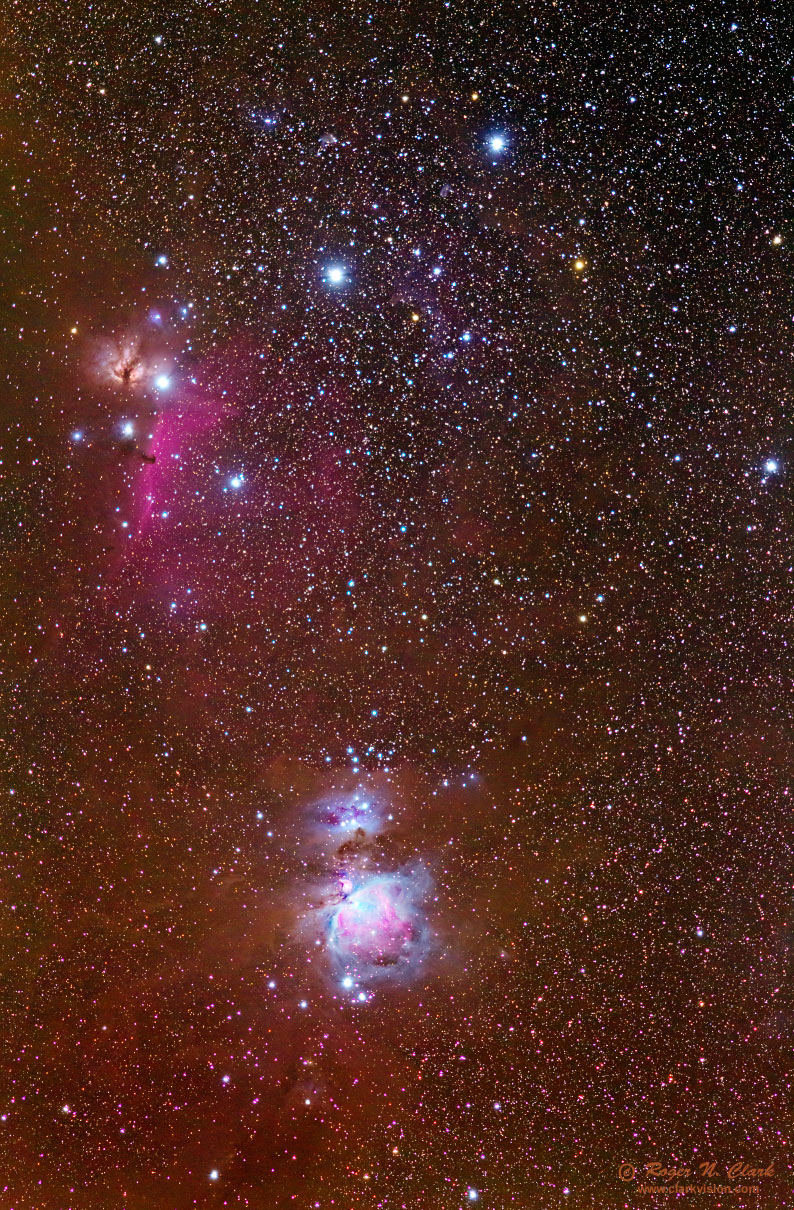| Home | Galleries | Articles | Reviews | Best Gear | New | About | Contact | Gallery Index | Previous |
Next |

| Home | Galleries | Articles | Reviews | Best Gear | New | About | Contact | Gallery Index | Previous |
Next |

The constellation of Orion is immersed in stars, gas and dust. This view shows Orion's belt, the three bright stars toward the top, and Orion's sword which contains the Great Orion Nebula, below, center. The left star of the three in Orion's belt is surrounded by nebulae, including the pinkish emission and the dark nebula which make the Horsehead nebula.
The full resolution image shows stars as faint as about magnitude 18.5. The brightest star is the central belt star, Alnilam, which is magnitude 1.65, giving a dynamic range of the scene of about 5.5 million, (over 22 photographic stops). The Great Orion Nebula is a showpiece in all telescopes, even small ones. The Horsehead nebula is visible in 8-inch diameter telescopes from a dark site. There are no records that I know of for visual observations to the very faint reddish nebulae pervasive in the scene.
Technical. Canon 1D Mark IV 16-megapixel digital camera, Canon 200 mm f/2.8 lens at f/2.8, ISO 1600. Twenty five 61-second exposures (25.4 minutes) were added along with shorter exposures for the core of the orion nebula: four 21 second exposures, five 5-second exposures, and four 1-second exposures (27.3 minutes total exposure). No dark frame subtraction, no flat fields, no noise reduction. Tracking with an astrotrac. The varied exposure times allowed a 16-stop dynamic range to be recorded.
The Exposure Factors, CEF, CEFA are measures of the relative amounts of light received from a subject. It can be used to fairly compare wildly different lens/telescope apertures and exposure times. For this image:
Modern DSLRs like the 1D Mark IV include on sensor dark current suppression and low fixed pattern noise at ISOs around 1600 and higher, making no need for dark frame subtraction. Modern raw converters correct for light fall-off and also correct for hot/dead/stuck pixels. This makes processing low light images easy: simply align and average.
To learn how to obtain stunning images like this, please visit my Extensive Articles on Photography .
Keywords to this image = astrophoto-1 Messier nebula digital_astro canon_1d4
Image ID: orion.200mm.rnclark.c10.09.2013.C45I4526-64.f-bin4x4s.jpg
| Home | Galleries | Articles | Reviews | Best Gear | Science | New | About | Contact |
Last updated November 03, 2025